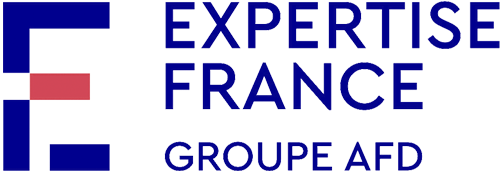Zero hunger: the food balance sheet, a very informative tool to prevent food insecurity
Food security is a core concern for African countries: the latest Global Report on Food Crises points out that five Sub-Saharan African countries are in a situation of acute food insecurity. Around the world, some 800 million people suffer from hunger. The international community therefore considers that eradicating hunger and its corollaries – strengthening food security, improving nutrition and promoting sustainable agriculture – are priorities. In this respect, they are set out in the 2030 Agenda and more specifically in SDG n° 2.
What is a food balance sheet?A food balance sheet is a national statistical/accounting framework that presents a table of the available food supply of a country during a given reference period. It can be used to estimate the rate of undernourishment of a population and the rate of food losses of a country. More importantly, it is used to estimate food shortages and surpluses and therefore to estimate the quantity of food aid required in the event of a shortage. These data provide a basis for the development of public policies to ensure food security. |
As with all the goals set out in the 2030 Agenda, achieving this SDG requires monitoring its implementation. This involves preparing food balance sheets, tables which include several monitoring indicators (see opposite). The Food and Agriculture Organization of the United Nations (FAO), which is responsible for monitoring SDG n° 2 at global level, recommends that governments prepare their food balance sheets themselves.
Working closely with this initiative, the SODDA project has contributed to building the capacities of three pilot African countries for the preparation of their food balance sheets. The project has contributed to financing activities to collect and compile food balance sheets by mobilising four statistical experts. During the finalisation phase for the balance sheets, it also organised a session to validate the results in the relevant statistical institutes.
This activity contributes to reflection on the SDG monitoring indicators in Africa initiated by the SODDA project, which is financed by the French Ministry for Europe and Foreign Affairs. In the context of this project which it is implementing, Expertise France is working with INSEE, the AFRISTAT observatory and the statistical institutes of its Member States, as well as with the African schools of statistics – ENSAE (Dakar), ENSEA (Abidjan), ISSEA and IFORD (Yaoundé).
Four indicators estimated in Benin, Guinea and Mali
Using a well-defined methodology and with support from the SODDA project, Benin, Guinea and Mali have each estimated four indicators to establish a first food balance sheet:
• The self-sufficiency ratio (SSR) measures whether the country is self-sufficient with its own productive resources. The higher the SSR, the more the country comes closer to self-sufficiency. However, when a significant quantity of domestic production is exported, the SSR may be high whereas the country relies heavily on imports to feed its own population.
• The import dependency ratio expresses the share of domestic supply that comes from imports. This ratio is only meaningful if the imports are used solely for domestic consumption and are not re-exported.
• The undernourishment indicator (prevalence of undernourishment) is an indicator of access to food and an estimate of the percentage of undernourished people in the total population. FAO defines undernourishment as the “situation in which habitual food consumption is insufficient to provide the dietary energy levels that are required to maintain a normal active and healthy life”.
• The food loss and food waste ratio throughout production and supply chains (including post-harvest).
Our expert’s opinion
Madior Fall is a statistician-economist and since January 2017 has held the position of international technical expert [1] in social, agricultural and environmental statistics to the Director General of AFRISTAT, the Economic and Statistical Observatory of Sub-Saharan Africa. He was previously an officer at the National Institute for Statistics and Economic Studies (INSEE).
What is special about your work at AFRISTAT??
In 2010, the national statistical institutes, Ministries of Agriculture and various regional and international organisations launched the development of a global strategy to improve agricultural and rural statistics. This global initiative aims to build the capacities of developing countries so that they can provide reliable statistics on agriculture, food and rural development. These statistics are subsequently used to formulate, monitor and evaluate development policies. The initiative aims to make the agricultural statistics system sustainable by improving governance and capacity building for statistics.
In this context, FAO has signed a Memorandum of Understanding with AFRISTAT and I am responsible for the implementation of this project in several pilot countries: Benin, Guinea, Madagascar, Mali, Cabo Verde and Côte d’Ivoire. Following this work and thanks to the SODDA project, we have been able to conduct in-depth analyses of the food balance sheets by estimating two key SDG indicators: the prevalence of undernourishment and post-harvest losses in Benin, Guinea and Mali.
What are the recommendations from this exercise for policymakers in the countries concerned?
The analysis shows that the substantial loss of products of plant origin compared to animal products often reflects the lack of a food preservation system and mechanism. The example of rice is a good illustration of this situation, as losses can be close to a fifth of the domestic availability of certain countries.
These results identify a number of aspects that need to be taken into account. Firstly, it is necessary to promote good practices for harvesting, storing and processing products at national level in order to reduce food losses. It is therefore essential to set up quality food preservation systems to reduce losses of products in general, and of rice and cassava in particular.
We need more high-quality data to better control undernourishment in countries. This could be achieved by carrying out a survey to collect data on the quantities of products actually consumed by households. This would not only provide a better estimate of the parameters for the calculation of undernourishment, but would also make it possible to know the actual level of energy consumption of households and facilitate disaggregated calculations in order to refine the analyses.
Governments must support policies to fight against undernourishment by promoting a resilient socio-political, economic and health environment. For example, for Guinea, the undernourishment indicator, which was on a downward trend during the pre-Ebola period, shows the important role that the socio-political environment plays in improving the conditions of populations. It proves that it is not enough simply to implement policies based on projects and programmes for the fight against food insecurity: this just one step. It is equally important to create a conducive socio-political and economic environment by preventing disruptive phenomena, in order to have sustainable impacts for these policies and reduce the vulnerability of the population.
Finally, the agriculture sector needs to be supported by investing in research and development, training the labour force and equipment in order to increase the overall productivity of the sector.
Our projects
Our cooperation projects are proof that international cooperation can be a really effective tool for improving official statistics.
Expertise France, drawing on its extensive experience in statistical assistance and its diverse network of experts, is actively working for the achievement of this objective. We are contributing to this global effort of the statistical community in the context of a close partnership with INSEE and the statistical offices of other European Union countries.
 To find out more, consult the SODDA project sheet
To find out more, consult the SODDA project sheet
 More about Expertise France and statistics
More about Expertise France and statistics
 Find out about the French National Institute of Statistics at https://www.insee.fr/en
Find out about the French National Institute of Statistics at https://www.insee.fr/en
 More about AFRISTAT (in French): www.afristat.org
More about AFRISTAT (in French): www.afristat.org
[1] The provision of long-term expertise is part of France’s international cooperation mechanism. The international technical experts (ITEs) are placed in national institutions and multilateral organisations and work on a daily basis with our partners abroad, while transferring their expertise to them. The management of these technical assistance missions has been entrusted to Expertise France since 2016.

